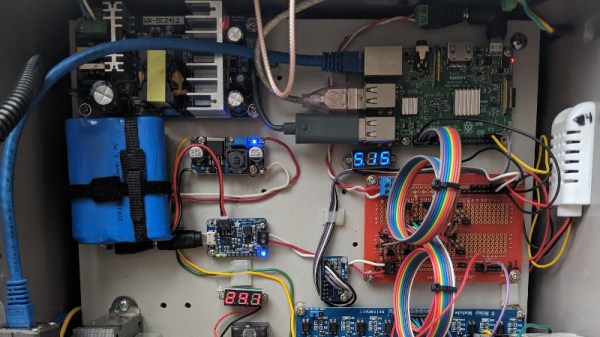Far from being a tiled hole in the ground with a bit of water in it, a modern swimming pool boasts a complex array of subsystems designed to ensure your morning dip is as perfect as that you’d find on the sun-kissed beaches of your dream tropical isle. And as you might expect with such complex pieces of equipment in a domestic setting, they grow old, go wrong, and are expensive to fix.
[DrewBeer]’s pool had just such a problem. A decades-oldwired controller had failed, so rather than stump up a fortune for a refit, he created his own pool controller which exists under the watchful eye of a Raspberry Pi. The breadth of functionality is apparent from his write-up. In addition to the pump and heater you’d expect, he as a salt water system, environmental monitoring, and even an RTL-SDR to pull in readings from an RF floating temperature probe. It’s all exposed via a node.js API, and thus far has been running for over 6 months without mishap.
From where this is being written in the gloom of a damp November in a Northern Hemisphere maritime climate we can only envy [Drew] his pool and imagine it as perpetually deep blue and sparkling, invitingly cool against the heat of a summer’s day. If you have similar pool automation woes. perhaps you’d also like to look at this ESP8266 pool monitor, or another automation project using a Raspberry Pi.












